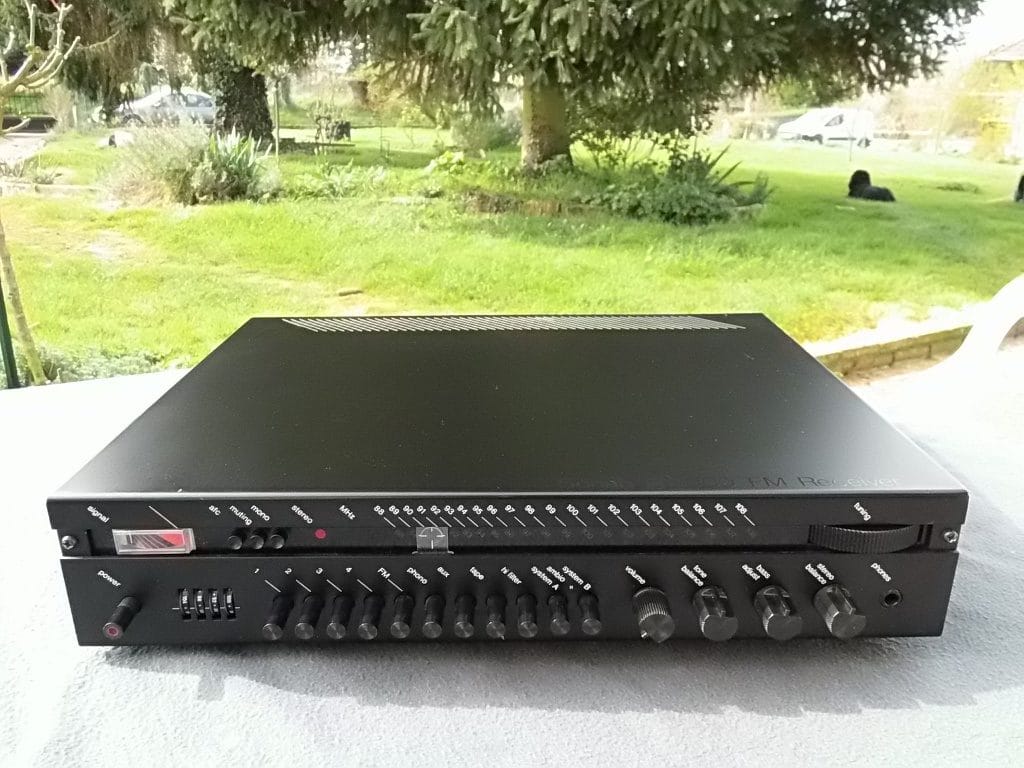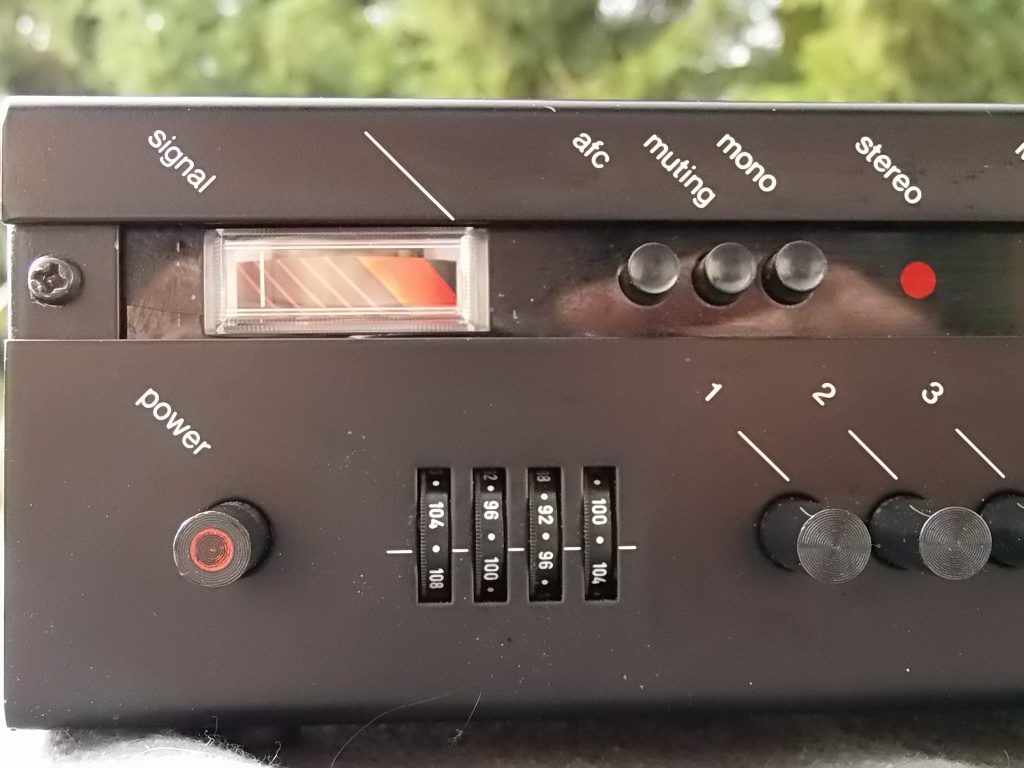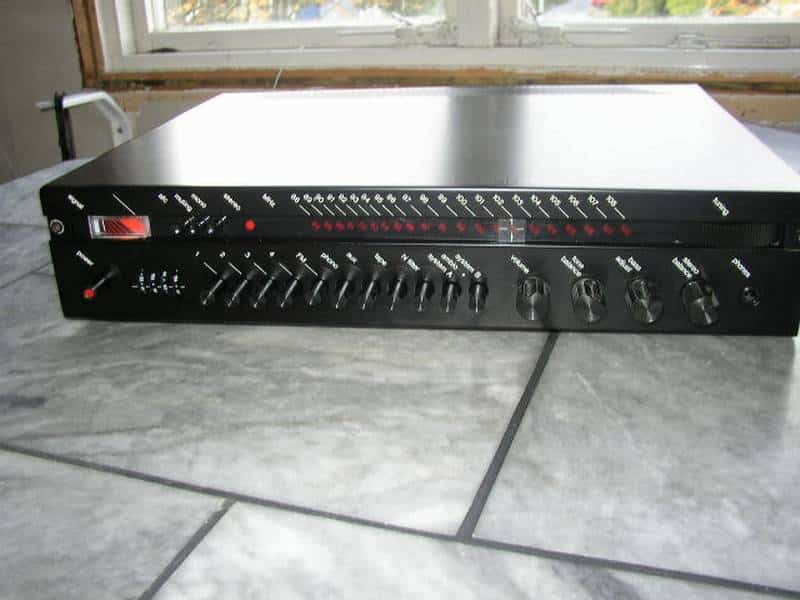Contents:
- Comparative pricing
- Buying advice
- Minimalist power cord
- The tone balance control
- Headphone jack
- FM section
- Amplification section
- Suitable partners
- For and against
- Should YOU buy?
- Where to buy
Howard Popeck writes: In 1978 at Subjective Audio Ltd I took one of these unusually styled receivers in part exchange. I had a soft spot for Sonab in general and their receivers and turntables in particular. I kept it and used it on and office in our service department. In the 1970s the Japanese were the ‘go-to’ Country for state-of-the-art receivers. B&O made decent receivers but, as is still the case today, audiophile aficionados were sniffy about that brand. So much for the Scandinavians.
Yes, in the UK there were good attempts by Leak (the 1800) and Armstrong (the 626) with both of these offering, on a decent signal, a sound quality that rivaled many of the Japanese heavyweights.
Against this, Sonab had a tough fight on their hands to be (a) acknowledged as a high-end receiver maker and (b) gain recognition from the then notoriously patriotic / partisan hifi mags. And so this fine piece as indeed did other first-class designs from Tandberg (Scandinavian again) became marginalised and then to all intents and purposes, disappeared. It’s time this vintage unit received recognition – hence this modest attempt at resurrection by me.
Comparative pricing
Sonab 3000 when new was £195.
For comparison, at that time a Yamaha CR 600 was £204, Sansui 881 was £286, Leak 1800 was £152, Armstrong 626 was £163
Okay, it’s subjective but …
This is a weird looking unit; for the mid 1970s at least. Strangely it looks, to my eyes at lest, remarkably modern today albeit in a rather cluttered way. Also it’s rather small considering its claimed 34W per channel RMS. Okay, small is a bit disparaging; compact is better. It’s neat too. You might not love the appearance but you might both like it and admire it.
Buying advice
All the connections are DIN. DIN was the default connector in that era and while debate still continues re the comparative sonic merits of DIN versus RCA the point is that ideally if purchasing one on the used market then it will come with a set of DIN connectors. Don’t underestimate the cost, today, of buying a set of DIN interconnects.
Also, the speaker connections are DIN too. Again ideally you’d want to buy this unit with a pair of DIN-terminated speaker cables. Two pairs of speakers can be connected. I have no idea if audiophile DIN speaker cables exist; sounds like a classic oxymoron to me.
Minimalist power cord
As typical for the day this unit was equipped with a simple 2-core mains lead. There’s little if any realistic opportunity to punch a modern IEC connector into the rear panel. Moreover there is no earth terminal. My notes from the time don’t indicate if I ever experienced hum problems; but that doesn’t axiomatically mean that you won’t!
The tone-balance control
No, this oddly named control is not a combined balance and tone controls. There are separate bass and treble control. What I'm taking about is the control button which in one direction boosts bass and cuts treble and does the reverse in the other direction.
Headphone jack?
Yes
FM section
Connection is via 75 ohm RMA coax socket and 300 ohm balanced.
Highly unusual for the time there are four pre set station controls. Setting the frequencies via them though is fiddly, frankly, via very small edgewise thumb tuning wheels. Conventional tuning for the non-presets is via a 5th push-button that moves the cursor along the horizontal scale.
At high volumes through average sensitivity speakers my unit exhibited some hiss although I never found this intrusive. I couldn’t get the multiplex filter to work at all. RF input sensitivity was below average but channel selectivity was excellent. In summary re FM, nothing particular outstanding but a slightly better than average sonic performance – providing a quality external aerial is used.
Amplification section
The overall sound is best described as ‘nice’ rather then spectacular. It’s sufficiently neutral with a reasonably polite top-end that is detailed and far from strident. The bass is not particularly hefty but is sufficient articulate if not particular deep. In summary, inoffensive.
Suitable partners?
If I were buying one of these and I wanted vintage equipment from that era that sonically balances the Sonab I would seek out:
Speakers: B&W DM110, JBL TLX4. JPW AP3, Mission 70 II, Morduant Short MS20, Rogers LS2, Rotel RL850, Spendor Prelude, Tannoy Mercury
Turntables: Acoustic research EB101, Ariston RD80SL, Dual CS505-2, Michell Synchro, NAD 5120, Rotel RP850, Systemdek !!X
Tape deck: Anything from Nakamichi, selected models from Akai
For and against
For includes a decent performance from a compact and neat box with a slightly above average FM performance and 34W RMS p/ch with negligible future financial depreciation and conversation-inducing styling.
Against includes the need for small fingers to operate the controls and the a loudness control than can be adjusted but not switched out of the system. DIN inputs is an inconvinience and the DIN speaker terminals, if you can’t get a decent set of DIN speaker cables might be a deal-breaker. Original spares may well be impossible to find.
Should YOU buy?
First, only if the unit is fully functioning both in terms of amplification and FM tuning. Realigning an FM section on any equipment these days is not inexpensive and people that can really do, as distinct from claiming to, is rare. If you don’t need massive power from a unit with unusual styling and you can cope with the DIN issues (both signal inputs and speaker outputs) then yes it’s worthy of consideration.
Guide prices are hard to determine because of the rarity and the varying conditions. If I was considering revolving one or more of my own current classic receivers, Luxman FQ990, Yamaha CR 2020 and so on and I had £200 to invest then I probably would buy a fully functioning Sonab 3000.
After all, all the depreciation has been wrung out of the model and if you buy wisely then even after a year or so of ownership my guess is that you’d lose on 10% > 15% of the price you paid.
© 2020 Howard Popeck












